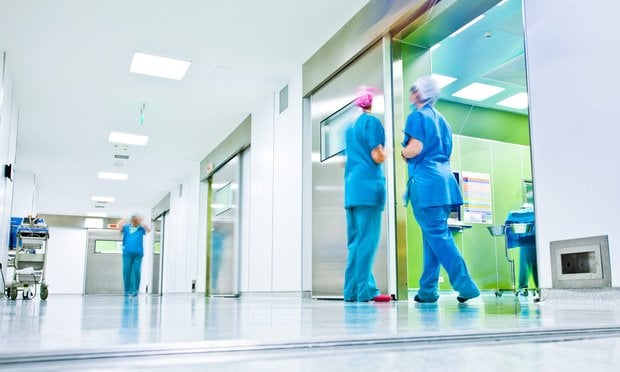 The seven-day moving average of new COVID-19 cases jumped 354% during December, the highest level during any period in the pandemic. (Photo: Shutterstock.com)
The seven-day moving average of new COVID-19 cases jumped 354% during December, the highest level during any period in the pandemic. (Photo: Shutterstock.com)
Hospitals continue to be squeezed by increased demand and rising costs as the pandemic continues into the new year.
"Hospitals and health systems nationwide closed the second year of the pandemic caught in a vise of rising volumes and ballooning expenses, as COVID-19 cases climbed to new highs and critical labor shortages and supply chain issues continued to plague providers," according to the latest National Hospital Flash Report from KaufmanHall.
Recommended For You
Many organizations ended 2021 in a stronger position than in 2020 as hospital leaders have learned to better navigate the pandemic's volatility. However, overall hospital performance remains below pre-pandemic levels on most metrics. Hospital volumes rose throughout December, as COVID-19 cases exploded with the rapid spread of the highly contagious Omicron variant.
The seven-day moving average of new COVID-19 cases jumped 354% during the month, from 86,975 to 394,407, which was the highest level during any period in the pandemic. The spike in cases drove a 98% increase in COVID-related hospitalizations in December, with the seven-day moving average of new daily admissions for infected patients rising to 13,083 by month's end.
Among the highlights of the report:
- Hospitals still are performing well below 2019 levels without CARES Act funding. Hospitals have yet to rebound to pre-pandemic levels of margins and volumes, while rising revenues have been offset by escalating expenses.
- Hospitals performed better in 2021 than in 2020. In 2021, hospitals rebounded somewhat from the first year of the pandemic, when providers nationwide shuttered elective services for weeks or months on end.
- Labor expenses continue to drive accelerating overall expenses. Labor costs rose above both 2020 and 2019 levels in 2021, contributing significantly to increased overall expenses and dampening hospital margins. The increases occurred as hospitals were hit with intense staffing shortages.
- Hospitals began feeling Omicron's impact in December. Hospitals saw rising volumes as patient days and emergency department visits rose. A flat month for operating room minutes suggests that many providers and non-COVID patients may have canceled care because of rising COVID caseloads, a trend that has been seen in previous waves of the pandemic.
© Touchpoint Markets, All Rights Reserved. Request academic re-use from www.copyright.com. All other uses, submit a request to [email protected]. For more inforrmation visit Asset & Logo Licensing.







